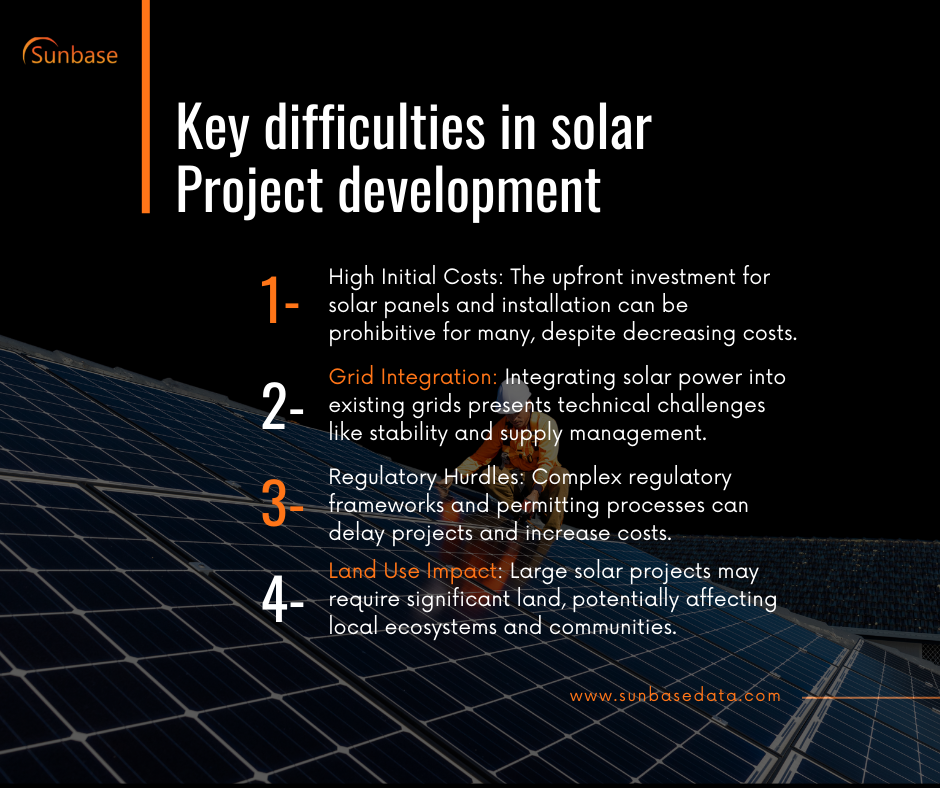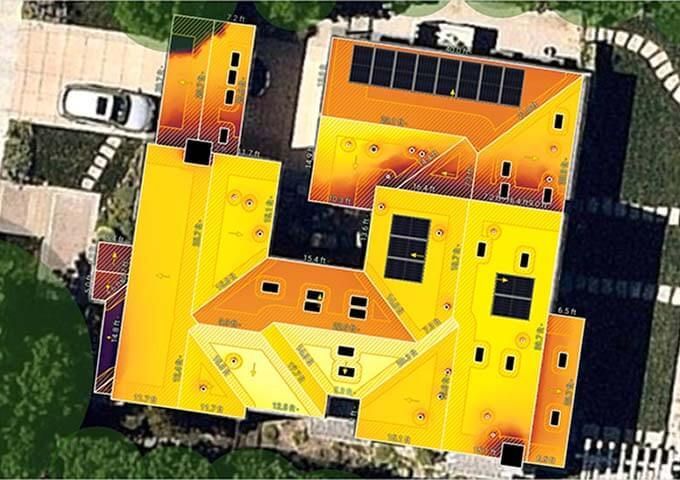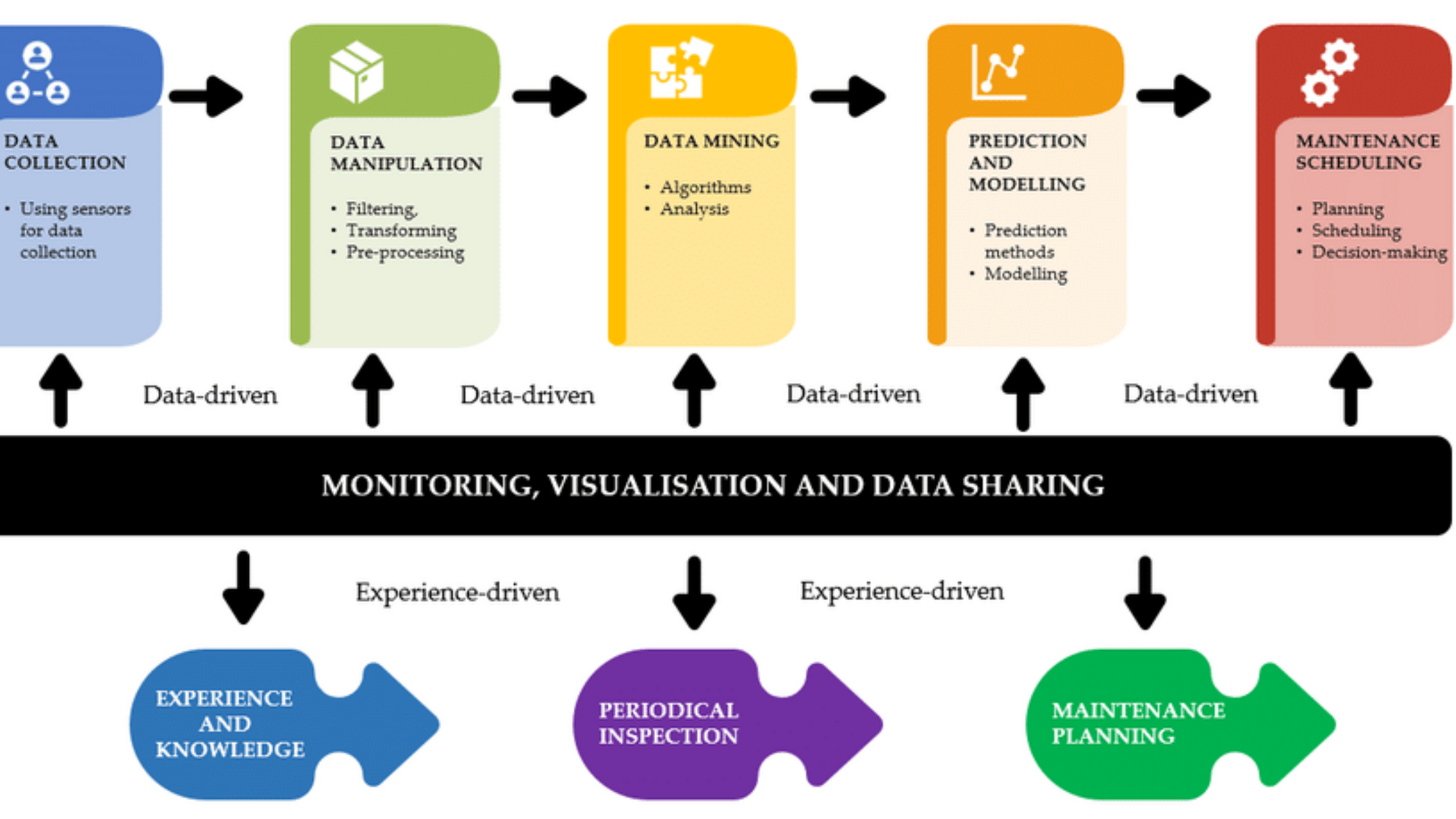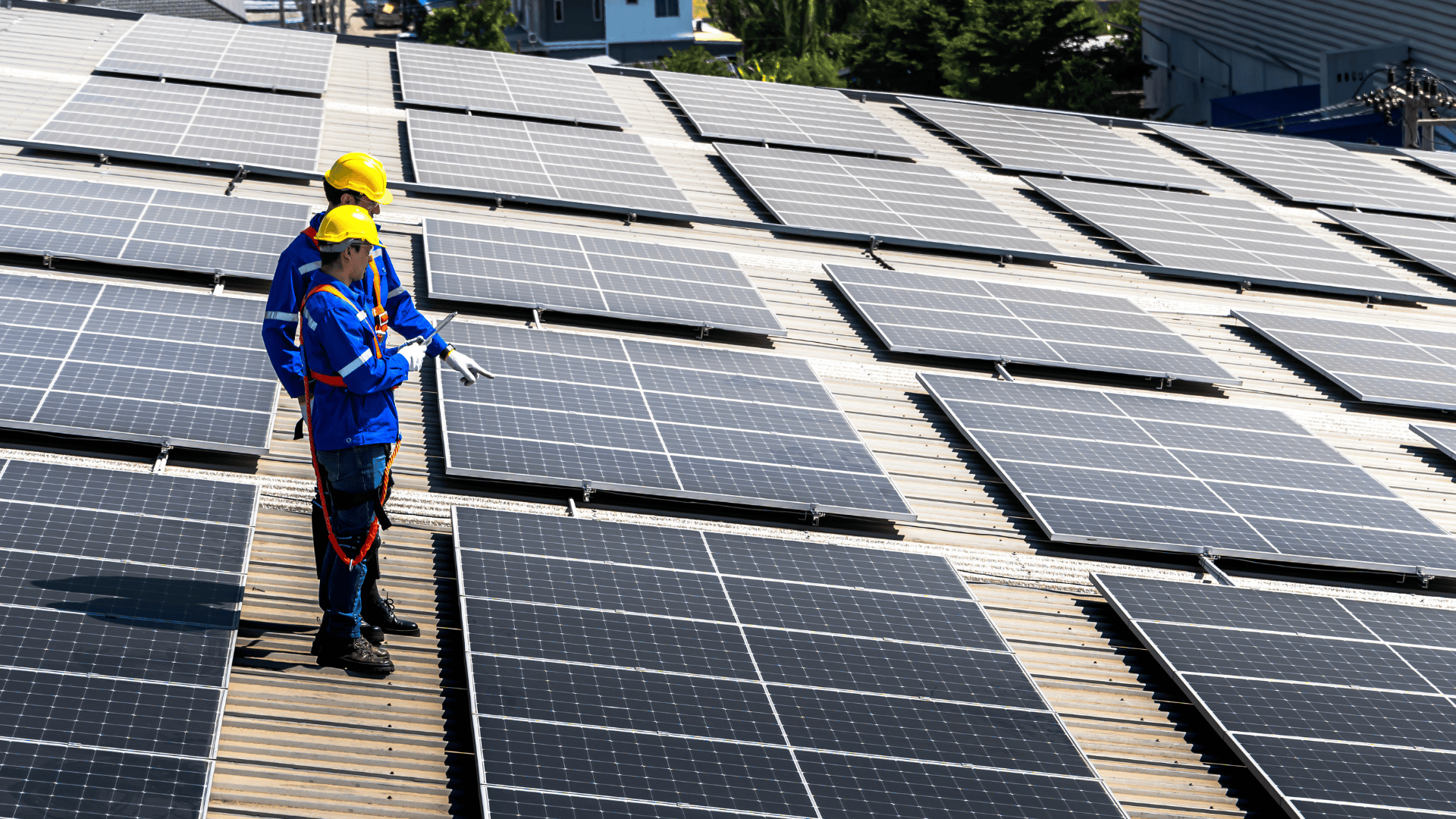July 15, 2024
The solar energy sector has grown at an average annual rate of 24% during the last ten years. According to a 2021 National Renewable Energy Laboratory (NREL) research, by 2035 solar energy might account for 40% of all power generation in the United States.
Forecasts and present trends for solar energy are positive, with photovoltaic (PV) installations being a key component in the solution of energy-related issues such as carbon pollution and energy reliance.
Problems with solar energy, however, pose a risk to growth and reduce solar accessibility for businesses and households. Stakeholders in the industry, governments, manufacturers, and scientists are looking for solutions to many obstacles to advance the development of solar power project progress.
In this blog, we will explore the solar industry's growth, the increasing challenges and strategies, and how Sunbase project management software can assist businesses in addressing these challenges.
The growing solar industry and its impact
As the globe switches to alternative energy sources, the solar business is expanding at the fastest pace ever. This expansion is being driven by rising demand for sustainable energy, technological improvements, and beneficial policies and incentives.

As solar energy can produce a large portion of the electricity we need without utilizing fossil fuels, it has the potential to drastically change our future. Although solar technology is still in its early stages, more people are becoming aware of its advantages and it is becoming less expensive.
Globally, solar energy is a huge topic due to rising concerns about global warming. Many scientists predict that solar energy will overtake all other renewable energy sources worldwide by 2030.
The expansion of the solar business significantly affects:
- Economy: The solar business is boosting employment and strengthening the economy.
- Environment: Climate change is mitigated and carbon emissions are reduced by solar energy.
- Technology: Advances in solar technology and energy storage have accelerated innovation.
See How Technology is Driving the Expansion of the Solar Industry.
What are the main challenges faced in solar projects and what are some effective strategies for tackling them?
Making a shift to solar energy is a milestone toward a better tomorrow and lowering your carbon footprint. However, the installation of rooftop solar panels can present a unique set of difficulties, just like any other home remodeling project.
Being aware of these possible roadblocks might help you plan and navigate them more effectively.

1. Site Assessment And Preparation
The success of establishing an industrial solar power plant is heavily reliant on on-site evaluations and preparation methods. Numerous significant elements, including soil stability, the impact of shade, and terrain analysis, are thoroughly investigated by project team members.
One of the main issues in this phase is accurately estimating the site's capacity to maximize solar infrastructure collection while minimizing building and operating dangers.
The orientation and slope of the land, the possibility of future obstacles (such as developing vegetation or planned projects), and the kind of soil can all have a big impact on the viability and design of the solar power plant.
Solution:
Project managers can use project management software to optimize system design, reducing material costs while maintaining efficiency.
2. High upfront costs for installation
Establishing industrial solar power facilities comes with high upfront costs. Solar energy installations need a significant down payment.
Installing panels, inverters, and other related equipment can be expensive, especially for small businesses and homeowners.
Obtaining funding for solar projects can be a challenging procedure, involving multiple loan choices and considerations. If financing options are not easily accessible, the upfront cost becomes an even greater roadblock.
Solution:
Working with financing experts in the planning phase which is a critical phase of the project life cycle can assist in identifying appropriate financing choices, hence increasing the accessibility of solar energy.
Getting funding for solar projects can be a difficult process. Project managers who are familiar with lean project management methodologies can help to streamline the process.
They can collaborate with the financiers to effectively collect and deliver the required paperwork, keeping the project on track.
3. Technological Advancements
The solar technology landscape is continually developing. Choosing the "best" panel is challenging because new and improved models are introduced regularly.
Keeping up with advances in technology and cost-efficiency are two opposing forces that are always in competition.
The compatibility of a technology should be taken into account while selecting it nowadays.
Solution:
Since technology is advancing quickly, it is essential to make sure your system can be integrated with new developments to maximize its lifespan and performance.

Agile project management strategies offer flexibility, allowing teams to adapt to technological advancements, ensuring project objectives remain updated with the latest developments, and thereby increasing the long-term benefits of solar installation.
4. Difficulty in managing multiple projects and stakeholders
Engineers, contractors, and investors are just a few of the many parties that are frequently involved in solar projects.
Managing a project team and getting everybody on the same page can be difficult.
Solution:
Successful project management leverages project management tools such as communication platforms and document-sharing software. They also reduce the possibility of mistakes that might hinder project development, increase transparency, and promote collaboration.
5. Communication Gaps
Effective communication is essential to project management success.
Communication problems within a solar project might be caused by geographical dispersion, language hurdles, and technical jargon.
Solution:
Project managers can close this gap by outlining clear communication expectations, leveraging collaborative tools, and encouraging an open communication culture among project team members.
Strong teamwork and communication with the installation crew also guarantee a seamless and error-free procedure.
6. Installation Challenges
Rooftop solar panels pose a significant challenge in terms of structural strength to handle the extra weight and wind strain, as they are lightweight but can strain the roof structure when paired with mounting gear and wind pressures.
Before moving forward with the installation, it is essential to have a professional inspect your roof to evaluate its condition and determine whether additional support or repairs are required.
Solution:
Get the roof inspected by a structural engineer from a respected solar company.
They can advise you on the additional support or repairs that are required to guarantee that the roof can safely support the additional weight and wind loads.
To learn more read our blog on Inspection Revolution: How Roofing Software Are Transforming Roof Assessments?
7. Long-Term Efficiency and Maintenance
Solar panels need routine maintenance to ensure maximum energy production, just like any other device. Over time, wear and tear as well as dust and debris can affect efficiency.
Solution:
It's crucial to have a proactive maintenance plan. Your solar project's longevity and return on investment can be increased with routine cleaning and inspections, which can stop minor faults from growing into larger ones.
Effective project management can overcome problems in solar projects by leveraging techniques and methodologies outlined in the Project Management Body of Knowledge (PMBOK), enabling the successful execution of the project plan and paving the way for a more sustainable future.
Read How Software is Driving Growth in the Solar Industry?
How does Sunbase provide innovative solutions for common solar project hurdles?
Although the solar business has advanced significantly in recent years, there are still several difficulties affecting solar project management.
To overcome these obstacles, project management professionals need creative solutions, from simplifying design to maintenance and performance monitoring.
With its innovative approaches to common solar project problems, Sunbase ensures a smooth project management process.
1. Streamlining Design
Sunbase's advanced design tools make the design process easier allowing project managers to generate precise and efficient system designs. This software eliminates manual calculations and saves a significant amount of time by automating processes like site inspections and solar energy calculations.

A project manager can then focus on what is most important: optimizing system design to optimize energy output while remaining cost-effective.
2. Generate Accurate Proposals
Creating accurate and compelling proposals can be tedious. Sunbase provides pre-built templates and automates data integration to expedite this procedure.
Project managers can create professional proposals in minutes, including accurate cost estimates and performance expectations. This enables them to concentrate on confidently presenting the solar value proposition to potential customers.
3. Enhanced Sales and Customer Management
Sunbase provides a centralized platform for handling communications, finance alternatives, and client data. Project managers can now organize proposals, track prospects, and provide financing choices all in one location, which streamlines the sales process.
Sunbase additionally assists clients by delivering clear and transparent information, which fosters trust and allows for informed decision-making.
4. Efficient Project Management
For project managers, Sunbase serves as an organizing system that facilitates cooperation and communication. All parties involved, including contractors, investors, and engineers, stay updated through real-time data exchange.
Sunbase's automated workflows and task management tools guarantee a seamless project management approach that reduces delays and maximizes productivity.
5. Improved transparency and Reduced Miscommunication
Sunbase's cloud-based platform allows project managers to effortlessly exchange information with stakeholders, team members, and customers.
This transparency guarantees that there is no room for miscommunication. This increases stakeholders' trust while also increasing the efficiency of the project as a whole.
6. Data-Driven Maintenance and Performance Monitoring
Sunbase is not just for the first installation. The platform offers performance monitoring and data-driven maintenance solutions.

Project managers can monitor performance, spot possible problems, and plan maintenance ahead of time with Sunbase's monitoring and maintenance module.
The data-driven approach ensures peak system performance, minimizes downtime, and extends system longevity.
Read our blog How Sunbase is Revolutionizing Solar Project Management?
In a nutshell
Greg Kats, Managing Director at Rocky Mountain Institute, says, "The biggest challenge in solar is not the technology, it's the soft costs - permitting, financing, and customer acquisition."
Switching to solar energy necessitates a systematic approach to the problem conclusion and a thorough understanding of the challenges, particularly in applications in industry.
Even though solar projects have difficulties, effective project management offers a robust solution.
Sunbase is not only software; it is a comprehensive solution suite designed to assist project managers and businesses.
Sunbase simplifies solar projects for a cleaner, more sustainable energy future by enhancing communication, promoting teamwork, and providing valuable insights through statistics.
About Sunbase
Using a comprehensive project management tool is one solution to enhance your solar operation.
Sunbase's user-friendly software provides all of the tools you need for efficient project planning, scheduling, collaboration, lead management, and day-to-day operations.
FAQ's
Q1. What are the advantages of using solar project management software?
Ans. Benefits include higher revenue, better customer satisfaction, decreased errors, and increased efficiency. According to the Project Management Institute, efficient project management can cut costs by up to 28%.
Q2. Can Sunbase solar software solutions integrate with existing systems and tools?
Yes, Sunbase solar software solutions can be integrated with current tools and systems to ensure minimal disruptions and smooth data flow.
Q3. Is all-in-one solar software right for my company?
Businesses of all sizes involved with solar projects can gain from all-in-one solar software. If your organization wants to simplify operations, improve cooperation, and obtain significant data insights, all-in-one solar software is a good investment.
I agree to receive marketing messaging from Sunbase at the phone number provided above. I understand data rates will apply, and can reply STOP to OPT OUT.







